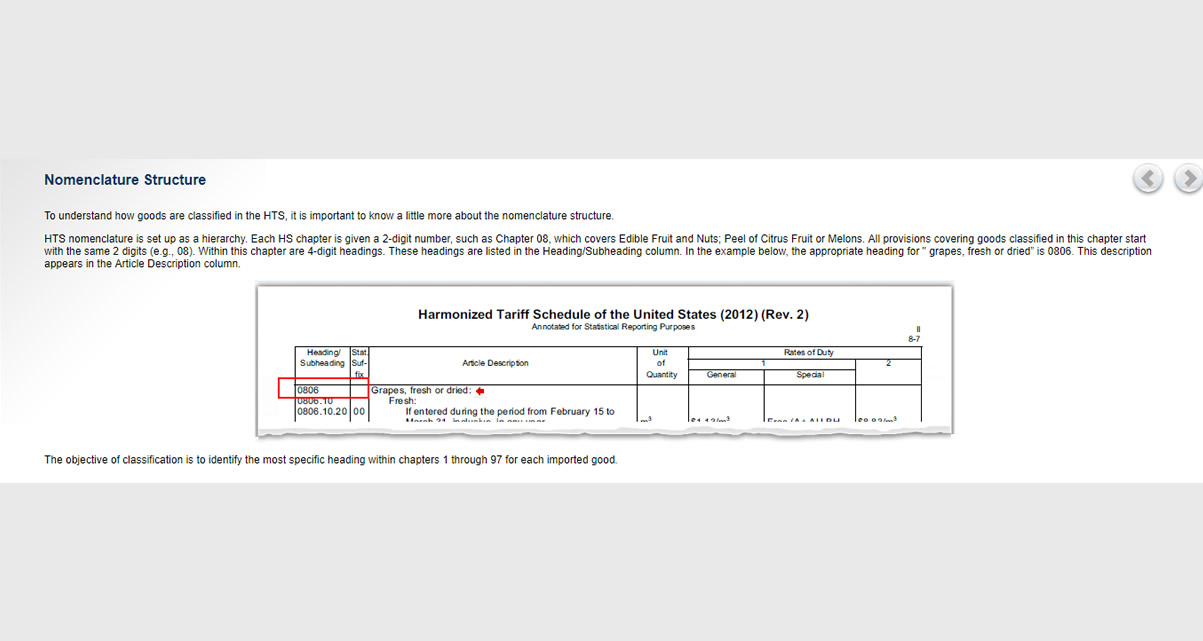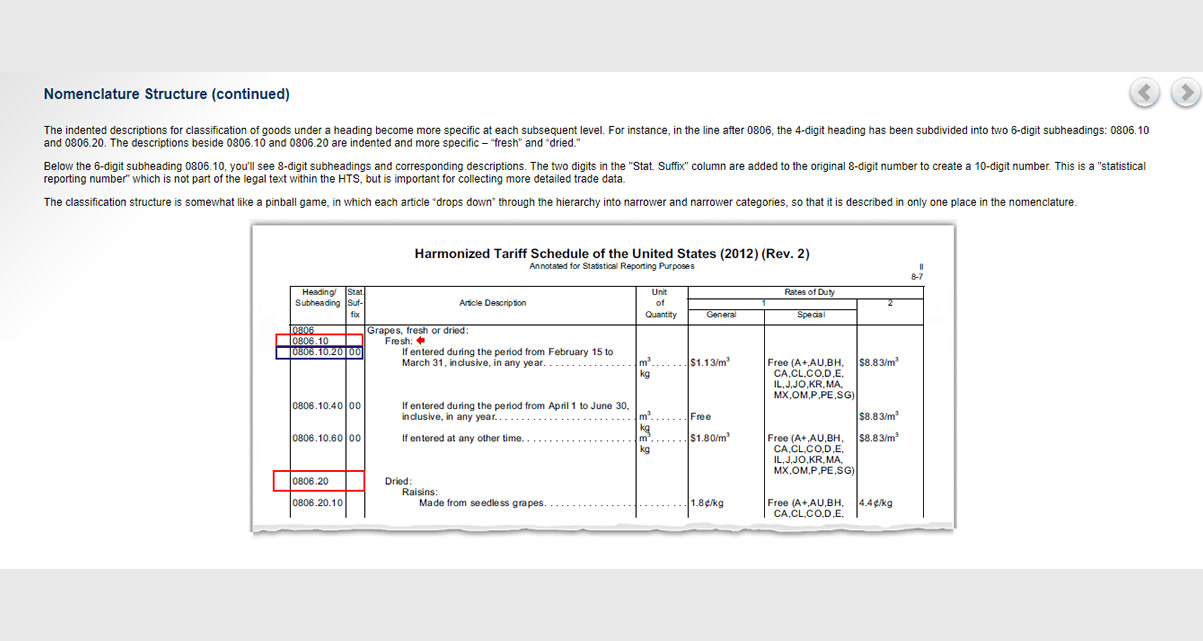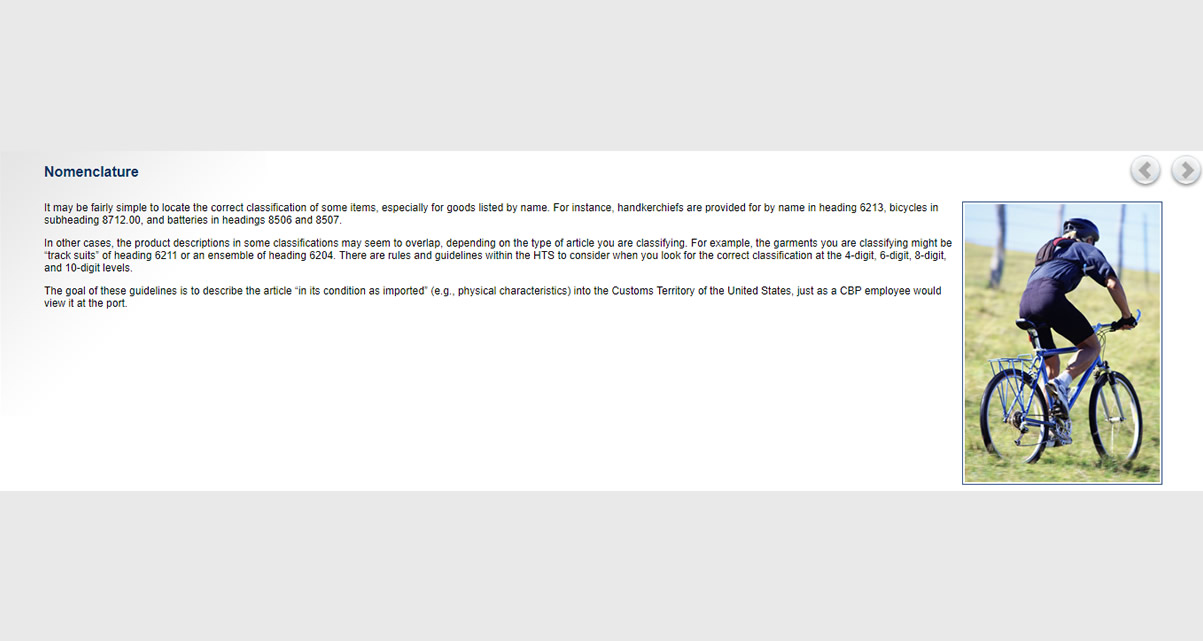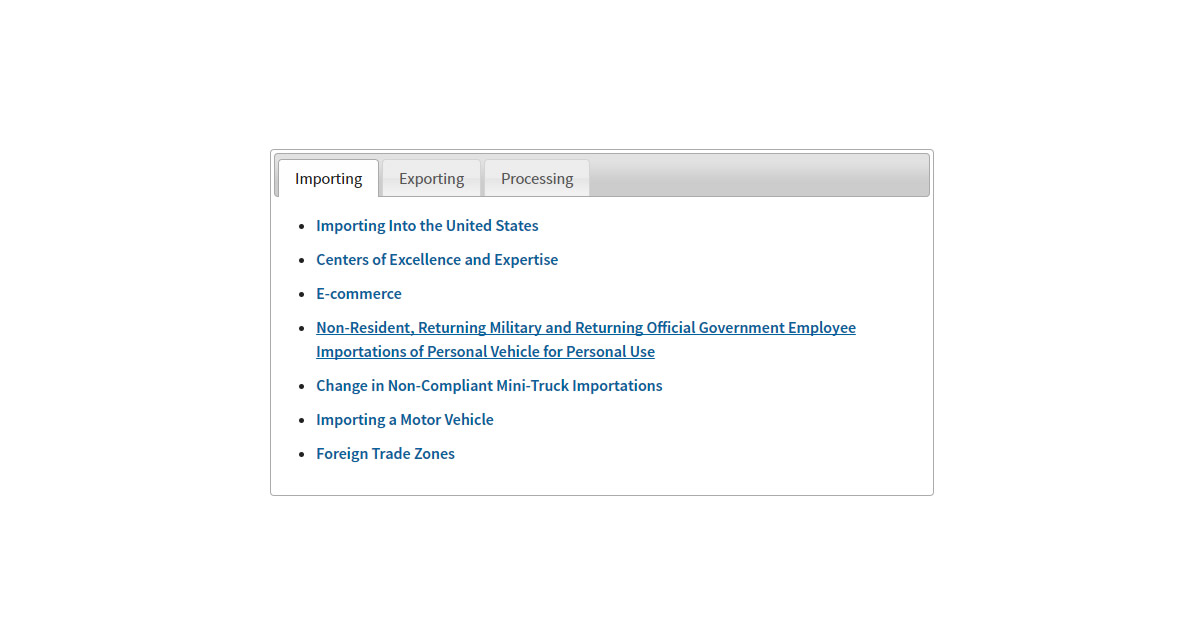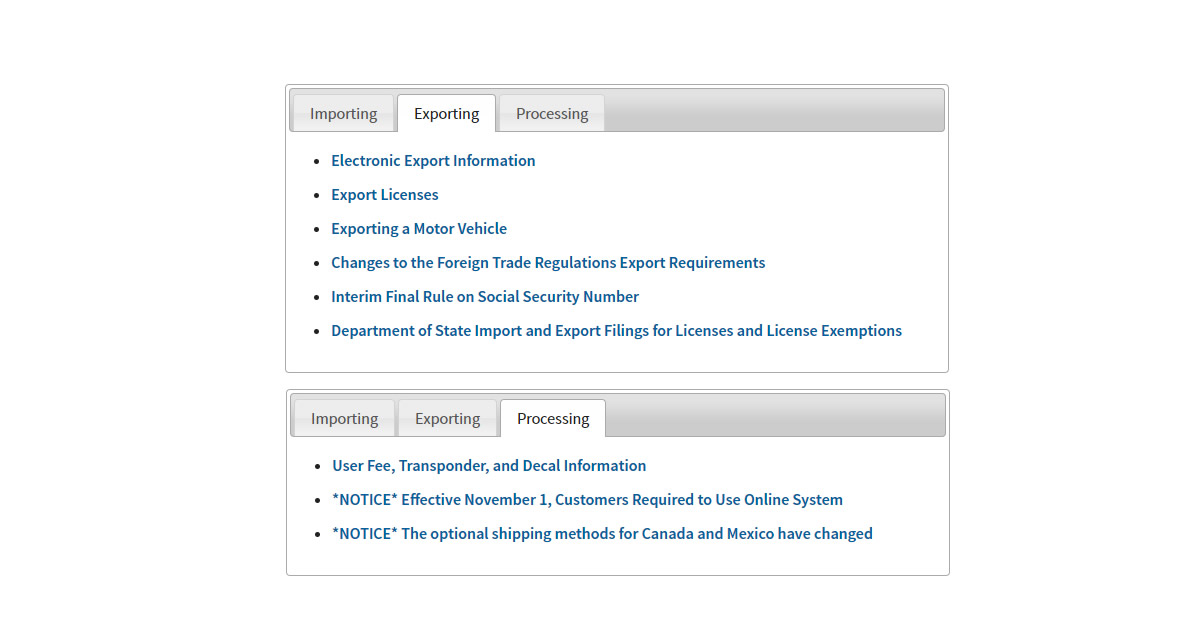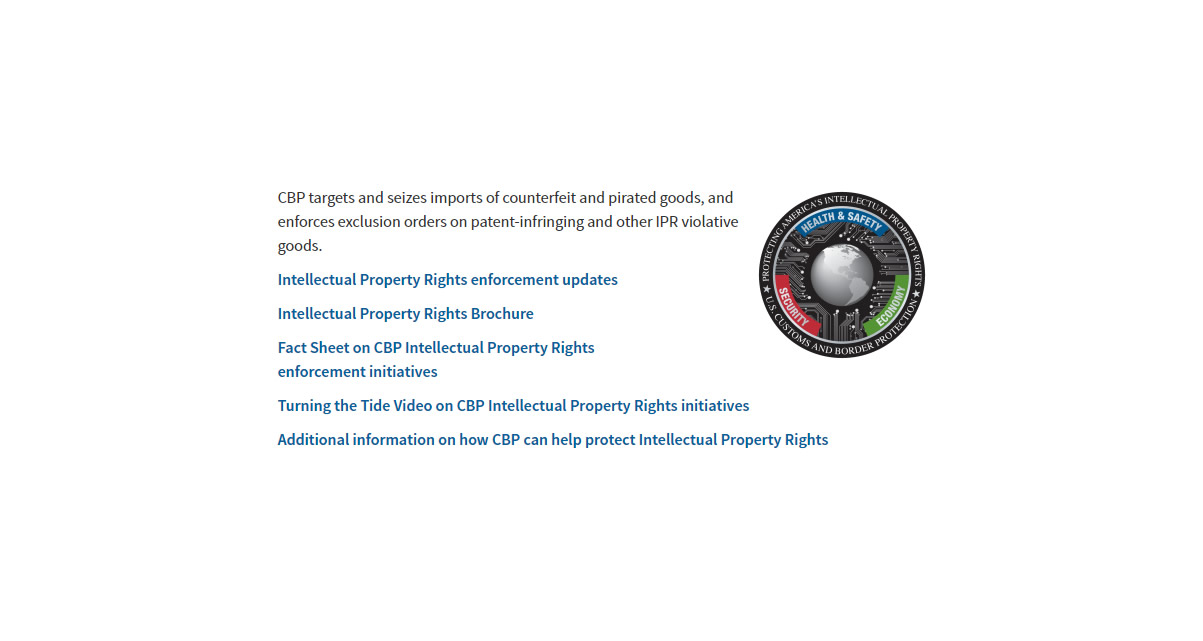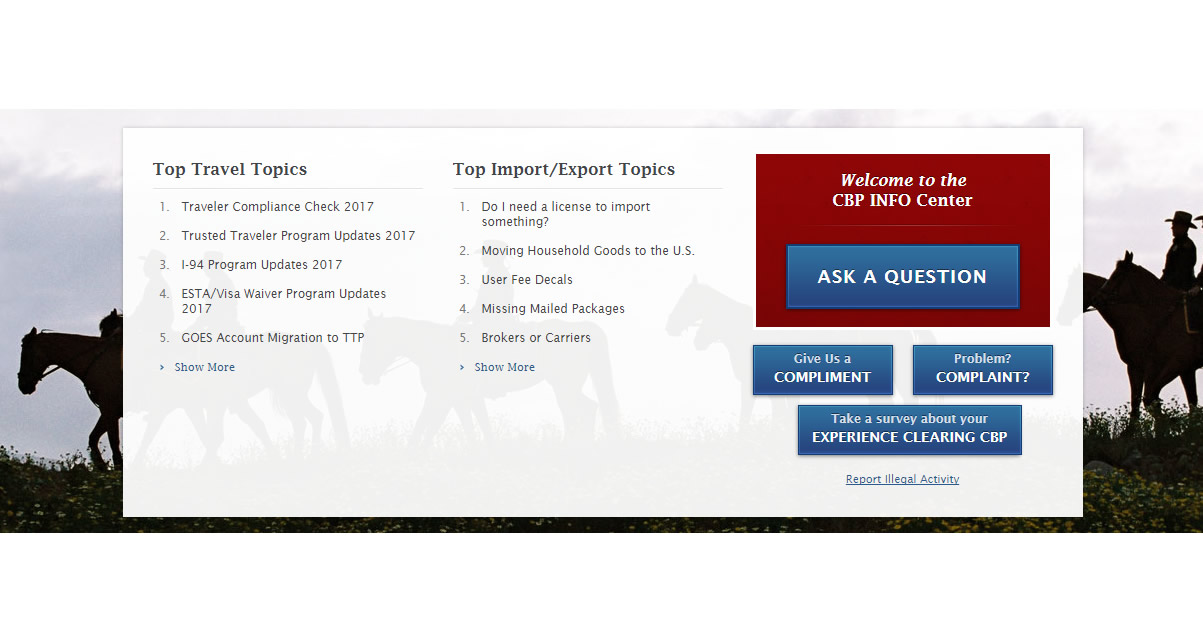Welcome to A Guide to the Harmonized Tariff Schedule of the United States (HTS) e-learning module.
“This module is designed to provide a basic understanding of the HTS and explain how to read the tariff schedule. It was originally designed for analysts and other staff of the United States International Trade Commission, but is now available to the public to enhance understanding of the HTS. The HTS is used to determine tariff classifications for goods imported into the United States. The United States International Trade Commission (USITC) plays a unique role in maintaining the HTS for Congress. The USITC also advises the United States Trade Representative (USTR) and Congress about trade proposals that might modify any or all of the thousands of product categories and duty rates.
Click here to learn how to access the HTS and other resources.
Customs & Border Protection
Basic Importing and Exporting
Both CBP and the importing/exporting community have a shared responsibility to maximize compliance with laws and regulations. In carrying out this task, CBP encourages importers/exporters to become familiar with applicable laws and regulations.
The information on this page promotes the understanding of this responsibility, as there may be specific requirements related to a particular commodity, such as those set by Partner Government Agencies (PGA).
Rulings and Legal Decisions
U.S. Customs and Border Protection (CBP) issues binding advance rulings and other legal decisions in connection with the importation of merchandise into the United States. Advance rulings provide the international trade community with a transparent and efficient means of understanding how CBP will treat a prospective import or carrier transaction.
For example, a ruling letter may address the tariff classification or appraised value of merchandise, the liquidation of an entry, or the exclusion of merchandise from entry. As such, ruling letters facilitate trade by enabling companies to make business decisions that are dependent on how their goods will be treated on importation.
CBP also issues other binding decisions such as internal advice decisions letters (covering current import and carrier transactions), and protest review decisions (appeals of CBP decisions on completed transactions).
With a view to promoting transparency, CBP also makes available to the public various other guidance including the following: the Customs Rulings On-Line Search System (CROSS – a database of published rulings), the Customs Bulletin and Decisions, pertinent Federal Register Notices, CBP Directives and Handbooks, Informed Compliance Publications, and a summary of laws enforced by CBP.
Intellectual Property Rights
Robert E. Perez, CBP's director of operations for New York area ports, describes how CBP targets imported goods for intellectual property rights violations prior to the 2014 Super Bowl. Photo by Josh Denmark
Trade in counterfeit and pirated goods threatens America’s innovation economy, the competitiveness of our businesses, the livelihoods of U.S. workers, and, in some cases, national security and the health and safety of consumers.
Trade in these illegitimate goods is associated with smuggling and other criminal activities, and often funds criminal enterprises. CBP protects businesses and consumers every day through an aggressive IPR enforcement program.
CBP targets and seizes imports of counterfeit and pirated goods, and enforces exclusion orders on patent-infringing and other IPR violative goods.
CBP Info Center
Top Travel Topics
- Traveler Compliance Check 2017
- Trusted Traveler Program Updates 2017
- I-94 Program Updates 2017
- ESTA/Visa Waiver Program Updates 2017
- GOES Account Migration to TTP
Top Import/Export Topics
- Do I need a license to import something?
- Moving Household Goods to the U.S.
- User Fee Decals
- Missing Mailed Packages
- Brokers or Carriers
Frequently Asked Questions
Why can’t I find my product when I search for the name?
The Tariff Schedule is not a list of products. It is a system of categories which are intended to provide a place to classify imported products. Some of the categories include only a single type of product (e.g. “vanilla beans” in 0905.00.0000), and a word search may find the proper category. However, most categories cover a range of products and are described in more general terms. In these cases, specific products may not be described by name and will not be found by a word search. The structure of the Tariff Schedule is a hierarchy, and each type of product is meant to be classified in only one category. A few items are excluded because they are not “articles of commerce.” The descriptions create a verbal “snapshot” of each product as it enters the customs territory, in the form in which it is imported.
How can I find the classification of a product?
Some products are named in the Tariff Schedule and can be found by searching for the name. Be aware, however, that finding a name of a product does not guarantee a correct classification. Consider the classification of a kitchen paring knife with a ceramic blade. Either a word search or casual browsing through the Tariff Schedule might lead to heading 8211 ("Knives with cutting blades, serrated or not, . . . ."). However, Chapter 82 Note 1 excludes articles with a blade of ceramic from Chapter 82. The proper classification is in Chapter 69 as an article of ceramics.
A systematic method for classification is described below, using the General Rules of Interpretation (GRI) and Additional U.S. Rules of Interpretation (at the beginning of the Tariff Schedule) and the appropriate legal descriptions and notes in Chapters 1 to 97.
Consider the classification of a purebred dog being imported for breeding. First, find four-digit headings where the product is described. Look for headings in Chapter 1, "Live Animals." [Note that according to GRI 1, some texts in the Tariff Schedule (e.g. chapter titles) are useful to find appropriate headings but have no legal significance.]
At this stage, compare only descriptions at the four digit, "non-indented" heading level, and read the descriptions of each heading until you decide which one covers the imported product most specifically. For example, if you consider heading 0101 ("Live horses, asses, mules and hinnies"), the description “Purebred breeding animals” in subheading 0101.10 only relates to horses, etc. Even if the dog in question is a purebred breeding animal, it cannot be classified anywhere within heading 0101 because it is not described in the non-indented text.
"Dogs" are not mentioned by name in any of the four-digit headings, but are described by the category "other live animals" ( heading 0106); there is no other possible provision in the schedule. This heading is a residual or "basket" category. The meaning of "other in this heading is derived by excluding the things named in all the headings that precede it. [Thus, it is often not possible to describe by a short simple statement what is included within many tariff classification numbers–especially the "baskets."]
If instead a product is described equally closely by more than one four-digit heading, check relevant section and chapter notes for definitions or exclusions that may eliminate some four-digit headings. If necessary, apply GRI's to decide which of the remaining four-digit headings applies.
After choosing a four-digit heading, compare the descriptive texts of that heading that appear at the first level of indentation to find the most specific category. Then compare descriptions at the second level of indentation, and so forth. Again, apply the GRI’s as appropriate in deciding between equally specific subheadings. [Six-digit and eight-digit categories are called "subheadings."]
Although, in principle, articles can be classified in only one place, classification often requires interpretation and judgment. U.S. Customs and Border Protection (CBP) has authority to make classification decisions and may disagree with a reasonable classification offered by the importer. Published Customs rulings (http://rulings.cbp.gov) are often useful to see how Customs looks at the issues. USITC does not issue classification decisions.
Antidumping and countervailing duties (AD/CVD) are not tariffs and are not in the Tariff Schedule. Although the ITC has a role in AD or CVD investigations, the rates of duty are set by the International Trade Administration (ITA) of the Department of Commerce.
CBP maintains a public database of many (but not all) instructions implementing the orders at:
http://addcvd.cbp.gov/index.asp?ac=home
These instructions contain information on rates of duty. They also have contact information at the ITA for further information. Questions about the scope of AD/CVD orders should be referred to the contacts in the instructions or to "Contact Import Administration" at:
http://www.ita.doc.gov/ia/index.asp
The two sites linked below can be used to find the Department of Commerce case number, which can be used when searching the CBP instruction site linked above.
A list of AD/CVD orders that were in effect on the date of update can be found here.
For recent or ongoing investigations see: http://www.usitc.gov/trade_remedy/index.htm
There is more than one rate shown where my product is classified. Which rate would be applicable to my product?
Column 2 rates apply to imports from countries (currently Cuba and North Korea) that do not have Normal Trade Relations status. Imports from all other countries can use the General rates. Imports from specific countries may be eligible for preferential column 1-special rates. See General Note 3 for Special rate codes and later General Notes for details of special programs.
What do the codes in the Special rate column mean?
The codes indicate the free trade agreements or tariff preference programs for which the Special rates are applicable. See General Note 3(c)(I) near the beginning of the Tariff Schedule for details.
What do the abbreviations in the Unit of Quantity column mean?
A list is the General Statistical Note 4, immediately after the General Notes at the beginning of the Tariff Schedule.
Can the HTS number be used to classify exports?
In most cases, yes. But see the General Statistical Notes and the Notice to Exporters immediately after the General Notes for exceptions.
All exports can be classified using Schedule B from the Bureau of the Census (see Other External Links, on this page).
What duty do I have to pay if I order something over the internet?
See the Customs and Border Protection website: http://www.cbp.gov/xp/cgov/trade/basic_trade/internet_purchases.xml
Do I have to pay duty if I import something for my personal use?
In general the same duties are charged on imports for personal use and for commercial imports. However, Chapter 98 has exceptions for some circumstances such the return of travelers or the move of people to the United States. In addition, Customs usually does not collect duties on personal shipments valued at less the $200 ($100 for gifts).
I will be traveling internationally. What duty will I have pay on things I bring back with me? What if I have them shipped? What if they are intended to be gifts?
See the CBP website
Where can I find trade statistics? Where can I find what certain companies are importing?
Trade data based on tariff categories can be obtained from the DataWeb, on this website(http://dataweb.usitc.gov/scripts/user_set.asp).
The trade activities of individual companies are treated as company confidential and are not published by the Government.
What are the tariffs for goods sent to other countries?
See Other External Links, on this page.”
What documents do I need to import? What duties and other charges are collected by Customs? Is the product I plan to import restricted?
The CBP website has extensive information on importing. For an overview of issues, see Importing Into the United States, which can be downloaded from: http://cbp.gov/xp/cgov/trade/basic_trade/ "
What value is used to calculate ad valorem duties?
The customs value is usually the price actually paid or payable computed from the point of exportation, without costs of international shipping. In certain circumstances, adjustments must be made or other methods of valuation must be used. CBP regulations provide information on how to compute customs value, and rulings can be requested in advance if questions exist.
How can I find items that have changed recently in the HTS?
Each version of the HTS includes a Change Record listing major changes since the previous version. (The Basic and Supplement versions that are published as paper editions include in their Change Records changes since the last paper edition. Versions labeled as Revisions, which are published electronically only, include in their Change Records only changes since the last version.). Changes such as staged rate reductions from trade agreements or corrections of typographical errors are usually not included.
Do other countries use the same classification system?
Almost all countries use tariff classification systems based on the international Harmonized System (HS). The HS is defined to the six-digit level, so foreign tariff schedules will be identical with the HTS up the six-digit level but may differ at finer levels of detail. (An exception is when countries implement changes to the HS at different times.)








